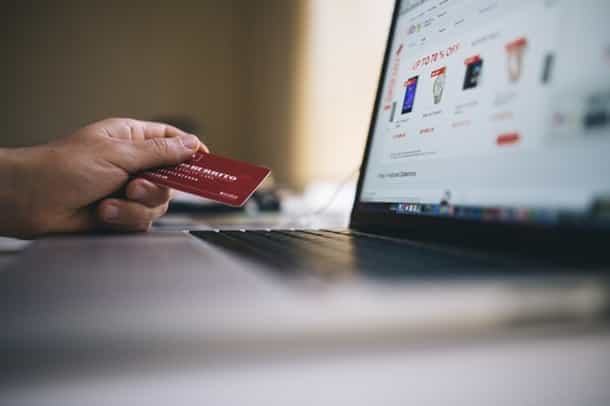Economy
What The Future Holds In The Indian Digital Payments Space
Ritu Bhandari
May 12, 2021, 06:12 PM | Updated 06:11 PM IST
Save & read from anywhere!
Bookmark stories for easy access on any device or the Swarajya app.


Cash is king, but Digital is divine. India has built an expansive, secure, efficient and scalable public digital infrastructure, ‘India Stack’ which is paving the way for a massive world-leading ‘Digital Payments Revolution’.
The entry of well-funded and aggressive technology-first companies (erstwhile dominated by Banks) has made digital payments ubiquitous in India and laid a strong foundation for digitization and cross-selling of other financial services and products.
New Use cases of UPI, Offline Retail Payments, Contactless Digitization of Transit
Given its ease of transaction, mass popularity and acceptance, UPI could drive growth of financial services such as micro-insurance, retail investments, online education, kirana tech, agri tech and even cross-border supply chain services.
UPI transactions would continue to grow at a fast pace driven by new UPI uses such as recurring UPI payment to Ola, Netflix and new UPI apps.
Credit on UPI like credit cards, could be a game-changer for lending. The government is planning to give GST rebate to merchants and customers based on UPI transactions. It will soon be mandatory for businesses to collect customer's GST/PAN number while initiating UPI transactions.
Lack of internet connectivity or low speed of internet, especially in remote areas, is a major impediment in adoption of digital payments.
The first cohort of the Regulatory Sandbox is testing offline retail payments. We can expect to see card- and wallet-based solutions similar to UPI and mobile payment transactions using USSD codes that are possible even without internet or smartphones.
With RBI increasing the limit of contactless payment to Rs 5,000, we expect contactless payments to grow substantially. Effective implementation of this technology has the potential to give a substantial boost to small value digital transactions, with innovative solutions such as mobile and wearable devices.
The most effective mass market use case of contactless payments is the digitization of transit systems such as the metro rail system of London, Bucharest, Tokyo and Moscow. In India, Delhi and Mumbai metros could lead the way for mass adoption of contactless digitization of transit.
Mass digitization of small businesses
There are around 13 million traditional grocery stores (Kiranas) in the country each of which are doing 100-200 transactions a day on an average i.e. low-ticket items of everyday purchases.
Not just grocery or commerce stores, but also services like plumbers, salons, etc are expected to be digitized.
The transformation of just 10 per cent of the 13 million Kiranas could boost retail consumption by more than 5 per cent and generate approximately 3.2 million new jobs in India, according to a new report from Accenture and the Trust for Retailers and Retail Associates of India (TRRAIN).
FinTech players are targeting the small traders and the Tier 2 and Tier 3 cities with digital payment services and credit schemes. The increased transparency in bookkeeping and effective tracking of receivables and payables will facilitate credit assessments and eventually lead to access to credit for MSMEs.
Open Banking/Account Aggregator framework to drive lending to MSMEs
For India to become a $5 trillion economy, lending needs to be done at a mass scale so both businesses and individuals can grow. As NITI Aayog CEO Amitabh Kant pointed out, India’s credit-to-GDP ratio (about 51 per cent) is lowest among its global peers and we need to increase private debt.
MSMEs, with 63 million units, constitutes about 90 per cent of all enterprises in India, employs over 120 million people and contributes significantly to the GDP.
As much as 85 per cent of MSMEs are unregistered. More than 70 per cent of these MSMEs are micro-enterprises, in active need of microfinance.
There is a large financing gap within MSMEs as well as individuals, where the credit penetration in India is below 15 per cent. Less than 20 per cent of MSMEs have access to formal credit amid an estimated MSME debt demand of Rs 70 trillion.
Most of the MSMEs being in the informal sector, barely possess any recorded financial history, which affects their capability to borrow credit from organised lending sources and have to resort to informal sources for debt such as family, friends, local moneylenders and chit funds.
They end up paying higher rates on loans borrowed with high collateral.
Open Banking with Open Credit Enablement Network (OCEN) and Account Aggregator framework along with the proposed Public Credit Registry (PCR) which would be a repository of all credit related information, would help plug the information gaps and give a fillip to lending to MSMEs.
Super Apps
Super-apps could be a major disruption in digital payments. A super app is a platform developed by a company offering various services under one umbrella. Apart from allowing users to make digital payment, super apps provide other services such as ticket booking, games, online shopping, banking and consumer finance.
Customer behaviour varies from person to person; while some prefer super-apps, others will prefer multiple apps.
For e.g. China’s WeChat, which started out as a messaging app, expanded into payments, cabs, shopping, food ordering, and cab services to become a super app.
It has almost two million third-party mini-applications within its app.
Prominent super apps in India are SBI YONO, MyJio, PayTm, etc. The Tata Group is also planning to launch a super app. While some payment super apps have come up in India, we expect them to expand their offerings further.
Tech savvy banks are expected to create their own super apps as there is data, brand recognition and value to be built rather than just being enablers of digital transactions and the interoperable standards of UPI payments makes it a valuable proposition.
Mass adoption of Buy Now Pay Later (BNPL)
There are only 30-40 million active credit cards in India, which is just 3 per cent of the population. BNPL, a contextual credit solution, has a huge potential in consumer credit in India, due to its ease of transaction.
The ease of signing up for an EMI/Pay Later solution, along with a quick and simple KYC to check eligibility in a matter of minutes, has made the BNPL solution popular.
While ability of BNPL to assess customers will improve with Account Aggregators, BNPL is likely to expand the credit culture in a similar but limited way as UPI has expanded digital payments.
It is estimated that almost 20 per cent of all the digital transactions in India were converted into ‘pay later’ schemes last year.
BNPL companies tie up with both merchants and e-commerce companies to serve as a payment option. For merchants, this is a great way to drive up the value of transactions. Most of the BNPL providers are available on the checkout of online shopping platforms.
Globally, BNPL giants such as Afterpay (Australia), Affirm and Klarna have been very successful. Most of the volume here comes from customers who don’t have a credit card i.e. they were expanding the consumer credit market, not cannibalizing it.
Internationalization of Aadhar, UPI and RuPay
India is a pioneer of UPI. NPCI is attempting to take its products — UPI and RuPay card — global and assist other countries in establishing a ‘real time payment system’ or a ‘domestic card scheme’ through its subsidiary NPCI International Payments Limited (NIPL).
To increase RuPay’s acceptance around the world, NPCI has tied up with 30 other payment networks and has thus made its presence felt across 195 countries across the globe.
Modular Open-Source Identity Platform (MOSIP) is India’s open-source offering that crystallises the learning from Aadhar and offers it to the world. It is currently being implemented in the Philippines and Morocco with 8 more countries in various stages of their national identity projects.
ID4D, a digital identification project from the World Bank, is inspired by Aadhar.
Public Credit Registry (PCR)
RBI is in the final stages of identifying entities that will set up the PCR. By bridging the information gap, a PCR will ensure credit flow to the last-mile customers, that have been left out of the formal financial fold.
PCR is an information repository where all information about existing as well as new corporate as well as retail borrowers is stored. The idea is to capture all relevant information in a single large database on both the outstanding loans and repayment history of an entity/corporate/individual.
AtmaNirbhar App Store
There are plans for creating an AtmaNirbhar App Store, in order to break the duopoly of Google Play Store (96 per cent share) and Apple App Store. Various Indian apps have been up in arms against Google, which has set a timeline of April 2022 for the enforcement of the autocratic 30 per cent commission on in-app purchases of digital goods from its Play Store.
The government's existing Mobile Seva App Store is expected to be refurbished to create the Indian App Store. The government may ask Google and Apple to pre-install Indian App Store in all phones sold in India in the near future.
India may also attempt to distribute its App Store on Progressive Web App (PWA) and get users to access it via any browser.
Digital Currency
RBI is exploring a legally safe, secure form of Central Bank Digital Currency (CBDC) with utmost precaution to come out with a digital currency in India. Prior to the launch of such a currency, the RBI will ensure that the necessary technological capability is created.
RBI has flagged some major concerns to the government on crypto currencies. The government will come out with a decision on the same.
Potential of Blockchain to unlock efficiency in cross-border digital payments
Blockchain technology was initially used to support the digital currency Bitcoin, but is now being explored for a wide variety of applications. Blockchain is a public distributed ledger with encryption and traceability, which can be managed in a decentralized fashion.
For instance, SWIFT global payment transfers currently take 24 to 48 hours, with SWIFT message approval itself taking at least 24 hours. This can be minimized with a blockchain-based digital transfer in which the entire global payment transfer can be completed within minutes.
Conclusion
There are prospects of a distinct Indian model for the internet — an AtmaNirbhar Internet — in order to keep the data value within India, that can be mined with the help of AI and ML.
Availability of biometric identification (fingerprints) with face and iris scans can be leveraged to push digital payments to exponential levels. While we are yet to see youth-focused banking apps in India, it is a matter of time that this trend shall pick up in India in the near term like seen in USA.
Increased digitisation in payments will help in better assessment of the country's GDP and increase government revenue by way of higher tax collection. As more and more enterprises and individuals across the country adopt digital payments, it will slowly eradicate the informal sector, weaken the parallel economy and increase economic development in India.
With only 100 million active users for digital payments on board, the journey has just begun.





